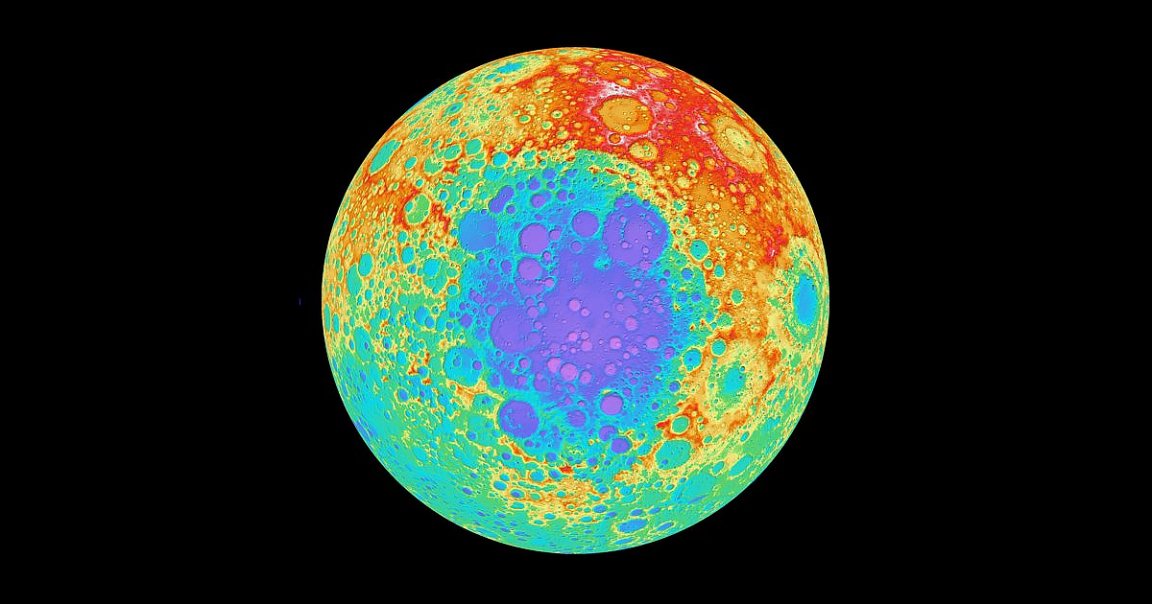
A Mass-ive Anomaly
The Moon’s largest crater — the 1,240 mile-across and four billion years-old South Pole-Aitken (SPA) basin — is hiding something enormous and metallic under its surface, as discovered by researchers from Baylor University and revealed to the world this week.
It’s a discovery that continues to puzzle scientists. Where did this 4.8 quintillion pound growth come from? What is it made of?
“Imagine taking a pile of metal five times larger than the Big Island of Hawaii and burying it underground,” Peter B. James, author of the paper, said in a press release. “That’s roughly how much unexpected mass we detected.”
A Tale of Two Theories
There are the two reasons why the mass exists, according to the researchers who discovered it.
The first is “that the metal from the asteroid that formed this crater is still embedded in the Moon’s mantle,” said James. The second is that the Moon’s liquid magma surface solidified billions of years ago, leaving dense oxides of nickel and iron.
“I think both of their suggestions could be valid,” wrote Sara Mazrouei, PhD candidate at the Department of Earth Sciences at the University of Toronto. “It could be remnants of dense oxides or core remnants of a giant impactor. The [latter] seems more plausible.”
Moon Formation
Regardless of what caused the gigantic mass on the far side of the Moon, understanding the origins of the Moon’s SPA basin is central to learning about the satellite’s formation.
“There is no doubt that this basin is very interesting – it is the largest impact feature that we know of in the solar system,” wrote Rosaly Lopes, Senior Research Scientist at NASA’s Jet Propulsion Laboratory (JPL), in an email.
“Regardless, the more we learn about the SPA and its formation, the more we’ll learn about the early days of Moon, Earth, and the inner solar system,” wrote Mazrouei.
More Questions
China’s Chang’e-4 lunar lander touched down in the Von Kármán crater — a crater located inside of the SPA basin — in January.
It made the long journey to the far side of the Moon to examine the chemical composition of lunar rocks and soil — but it’s unlikely it’ll be able to probe the strange mass that extends to “depths of more than 300 km [186 miles]” according to the researchers’ paper.
At the same time, efforts to return humans to the Moon is heating up. NASA is eyeing 2024 for the next chance to land American astronauts on its surface. Perhaps then we’ll have a chance to get a closer look at the Moon’s giant metallic secret.
And if you thought that the metal might be a buried alien spacecraft, you won’t be siding with the experts.
“I don’t speculate on extra-terrestrial civilizations, sorry,” one of the researchers we talked to said.
READ MORE: Mass anomaly detected under the moon’s largest crater [Baylor University]
More on the anomaly: Astronomers Discover “Deep Structure” Under Moon’s Largest Crater